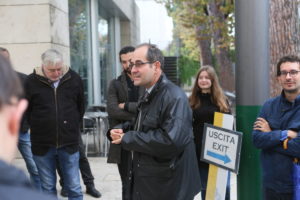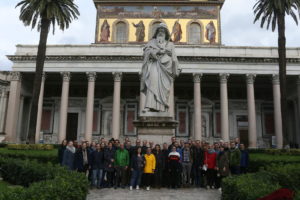
Research Seminar “Pauline Traditions in Early Christianity in Rome” – Report
Two apostles are firmly rooted in the Roman tradition: Peter and Paul. So it is not surprising that the research seminar “Petrine Traditions in Early Christianity”, which took place in 2016 and whose proceedings are being published these days, was continued this year with a focus on Paul.
From 6 to 10 November together with the seminar leaders Jörg Frey (Zurich), Jens Schröter (Berlin) and Martin Wallraff (Munich), the Melanchthon Centre invited professors, post-doctoral students and doctoral candidates in New Testament and Early Church History from Germany, Austria and Switzerland as well as students from the Melanchthon Centre to the Eternal City from 6 to 10 November to explore the significance of Paul for Roman Christians in the early centuries.
Curious listeners were allowed to discuss where and how Paul might have lived in Rome, why Pope Gregory the Great dared centuries later to deny Pauline relics to the Byzantine Empress Constantia, or by what route Paul came to Rome at all.
The programme gained its special, stimulating dynamic through the exchange between the different generations of scholars and, in a special way, through the interaction of seminar and excursion. The most important Pauline sites of San Paolo alle Tre Fontane as the place of martyrdom and San Paolo Fuori le Mura as the place of burial were visited as well as the catacombs on the Via Appia or – in darkness and pouring rain – the “Conversion of Paul” by Caravaggio in Santa Maria del Popolo. The day that the seminar spent in the basilica and in the monastery of San Paolo Fuori le Mura from morning prayer to vespers was perhaps the most intensive, as it made the learning and research at the site most tangible, especially with regard to the question of when the altar stood where and how it related to Paul’s tomb architecturally and liturgically over the course of time.
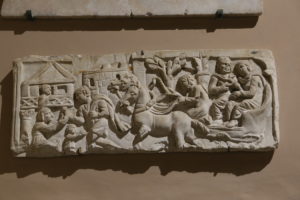
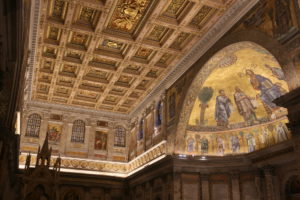
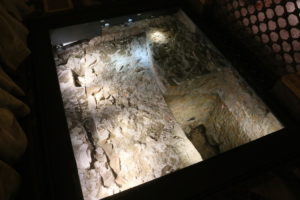
In addition, the “other Rome” was not denied to the Rome visitors: Prof. Garrone from the Waldensian faculty di Teologia led a guided tour of the ghetto on the penultimate day, 9 November, and drew attention to many previously unseen details.
But this Pauline seminar was also enriched by the encounters and conversations of a professional and private nature that arose on the many paths through Rome. And so, the stay in Rome was not only a broadening of horizons for the mind and senses and for one’s own research work, but also a valuable making of new, cordial contacts. The programme was – also thanks to Martin Wallraff’s indefatigability and enthusiasm – so intense and dense that one hardly got around to buying a postcard and certainly not to throwing a coin into the Fontana di Trevi to be able to come back. But who believes in that? Theologians would do better to follow Paul’s example, who in his letter to Rome fervently hoped “whether it might one day come to pass by the will of God” (Rom 1:10).
Report: Elisa Victoria Blum
Photo: Philipp Pilhofer
